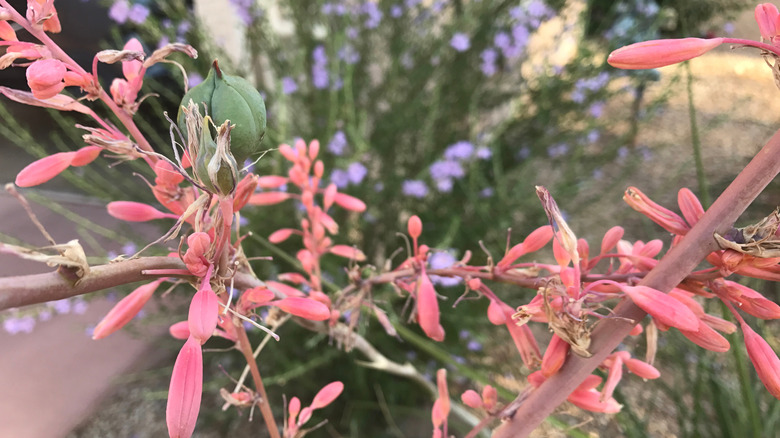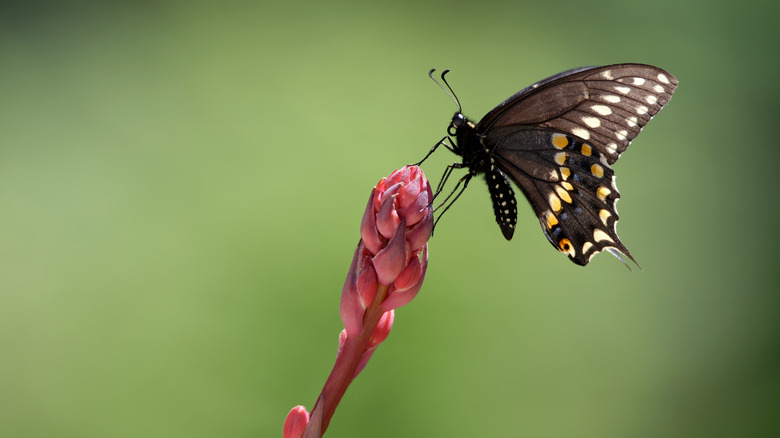Hardy Herbs That Are Great Companion Plants Alongside Red Yucca
If you're in a dry climate, building out a rock garden, or trying the xeriscaping trend, a towering red yucca plant is a welcome addition. Red yucca (Hesperaloe parviflora) graces the garden with a dark green leaf clump and tubular coral or red flowers that attract hummingbirds. Its name is a nod to its sword-shaped leaves that resemble those of yucca, but it's actually a type of succulent. Native to Mexico and Texas, this desert plant can thrive in the heat with minimal watering once it's settled in. Red yucca's neighbor plants should be able to tolerate drought just as well, so many gardeners plant cacti, wildflowers, or grasses nearby, but some of its best companion plants are also edible. Thyme (Thymus vulgaris), rosemary (Salvia rosmarinus), and lavender (Lavandula) are hardy herbs that grow well alongside red yucca because they have similar soil and water needs. You can also consider drought-tolerant shrubs like Russian sage (Salvia yangii).
Red yucca loves to bask in full sun, and can be grown outdoors in USDA Hardiness Zones 6 through 10. The flowers may appear spiky for the first growing season, but bigger branches of flowers develop as the plant ages. Well-draining soil is important to its growth, although it can be either acidic or alkaline. Herbs like thyme, lavender, and rosemary have much in common with red yucca; they need full sun conditions like their native Mediterranean habitat and to be grown in soil that drains well. Another quality that makes them great companion plants is their ability to survive drought.
How to grow herb or shrubs with red yucca
When you pair sun-loving herbs with red yucca, you're engaging in companion planting, a space-saving practice through which neighboring plants develop beneficial relationships with one another. Since red yucca is a low-maintenance perennial plant, just like thyme and other herbs, grouping them together will save space while ensuring the area has plants all year long that don't need a ton of attention. Russian sage, also a perennial, can visually complement red yucca with its grayish-green leaves even when it's not flowering.
In addition to their similar soil preferences, lavender brings in various pollinators and Russian sage is a drought-tolerant garden favorite that attracts bees. As companion plants, they will help ensure there are enough pollinators around for red yucca. Clustering pollinator-attracting plants of different heights near each other is also a way to make a barrier against weeds.
Give your red yucca an herbaceous companion by planting lavender and thyme in the spring or fall. Rosemary can be added to the garden later in the spring or early in the summer, or year-round in warm, temperate climates. If Russian sage is your chosen companion, transfer it from a container to the outdoor soil in the early spring or throughout the summer.

